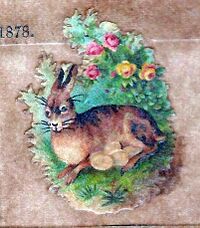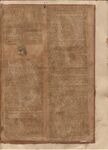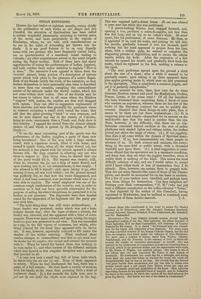< Captain Burton's work entitled Goa (continued from page 7-24) >
become; more and more plentiful. Neither did I cite the Cornhill Magazine as an authority, for that speaks of the Thibetans, not of the Todas. I referred to it merely as illustrating the nature of the polyandry attributed to the Todas, not as proving that the latter practised it. Among Hindoos of every caste, all shades of colour, from a light bamboo to a jet black may be met with. The fairest specimens are to be found among Brahmins (presumably the caste least mixed with aboriginal blood); but even among these I have never seen any who could really be said to be fair as Europeans. Among Mussulmans, especially those from Upper India, I have seen those to whom the term might be applied; they had red whiskers and beards, and complexions no darker than those of Italians and Spaniards. Grey eyes (cats’-eyes, as the natives call them in Southern India) I have seen among both Hindoos and Mussulmans, even when the skin has been of a copper colour.
I note that while “Late Madras C. S.” cites Marshall’s A Phrenologist among the Todas against Madame Blavatsky, Dr. Carter Blake would cite the work in her favour. I only contradict those statements which my own eyes tell me are wrong, and account for other alleged facts in the ordinary way.
Bath, March 15th, 1878.

Indian Mysticisms
During the last twelve or eighteen months, owing chiefly to the publication of such works as Art Magic and Isis Unveiled, the attention of Spiritualists has been called to certain wonderful phenomena occurring in various parts of the world, and more particularly in the regions of Hindustan, where, we are told, such manifestations as we are in the habit of witnessing are thrown into the shade. It is my good fortune to he on very friendly terms with two persons who have frequently visited India, one as quartermaster of a merchant vessel trading to Calcutta; my other acquaintance served in the naval brigade during the Sepoy mutiny. Both of these have had many opportunities of seeing the performances of Indian jugglers, and both confess their entire inability to explain “How it is done.” The narrative I now append is taken from the Oriental Annual, being portion of a description of various sports which took place in the presence of a native Rajah. Both of my friends certify the truth of the narrative, as they declare themselves to have personally seen what is described on more than one occasion, excepting the extraordinary matter of the animals under the wicker basket, which has not come within their notice. One of my friends says he has reason to believe that in all cases where the Hindoos “conjure” with snakes, the reptiles are first well drugged with opium. They can offer no suggestion explanatory of these marvels, and state that generally the performer wears no raiment excepting a small cloth round the loins; they add that the plant-growing “trick” is very common, and can be seen almost any day in the streets of Calcutta, being no more uncommon than a Punch and Judy show in this country. I append the record from the Annual already spoken of, and which is quoted by Dr. Douglas, of Edinburgh:—
“To me the most interesting part of the sports was the performance of the Indian jugglers, a party of them now being introduced. One of the men took a large earthen vessel, with a capacious mouth, filled it with water, and turned it upside down, when all the water flowed out, but the moment it was placed with the mouth upward it always became full. He then emptied it, allowing any one who chose to inspect it. This being done, he desired that one of the party would fill it. His request was obeyed; still, when he reversed the jar not a drop of water flowed, and upon looking into it, to our astonishment, it was empty. I was allowed to fill it myself; still, upon taking it up, after turning it over, all was void within; yet the ground around was perfectly dry, so that how the water disappeared, and where it had been conveyed, were problems which none of us were able to explain. The vessel employed was one of the common rough earthenware of the country, and, in order to convince us it had not been specially constructed for the purpose of aiding his clever deceptions, he permitted it to be broken in our presence. The fragments were then handed round for the inspection of his highness and the party present with him.
“The next thing done was still more extraordinary. A large basket was produced, under which was put a lean, hungry female dog; after the lapse of about a minute, the basket was removed, and she appeared with a litter of seven puppies. These were again covered, and upon raising the magic basket a goat was presented to our view. This was succeeded by a pig, in the full vigour of existence, but which, after being covered for the usual time appeared with its throat cut. It was, however, mystically restored to life under the shadow of the wicker covering. What rendered these sudden changes so extraordinary was that no one stood near the basket but the juggler, who raised and covered the animals with it. When he raised the basket there was nothing to be seen under it; and what became of the different animals which had figured in this singular deception was a question that puzzled us all.
“A man now took a small bag full of brass balls which he threw into the air one by one. None of them appeared to return. When he had discharged the last, there was a pause of a full minute. He then made a variety of motions with his hands, at the same time grunting forth a kind of barbarous chant. In a few seconds the balls were seen to fall one by one until the whole were replaced in the bag. This was repeated half-a-dozen times. No one was allowed to come near him while this was performed.
“A gaunt-looking Hindoo next stepped forward, and, opening a box, produced a cobra-di-capello, not less than five feet long, and as big as an infant’s wrist. He stood apart, like his predecessor, at some distance. He then, as it appeared to us, took the snake, and putting its tail into his mouth, gradually lowered it into his stomach until nothing but the head appeared to project from his lips, when, with a sudden gulp, he seemed to complete the disgusting process of deglutition, and to secure the odious reptile within his body. After the expiration of a few seconds he opened his mouth and gradually drew forth the snake, which he replaced in the box, making a salaam to the rajah.
“The next performer spread upon the ground a cloth about the size of a sheet; after a while it seemed to be gradually raised: upon taking it up there appeared three pine apples growing under it, which were cut and presented to the spectators. This is considered a common juggle, and yet it is perfectly inexplicable.”
If this account be true, then, how very far do these itinerant Hindoos exceed and excel the Maskelynes, Cookes, Boscos, Lynns, et hoc genus omne? Of all the travellers who have witnessed these surprising feats, I know of none who venture an exposition, whereas there are but few of the tricks of the European conjurer but can be quickly dis- covered. Granted that these things do take place, then it seems to be there are but three explanations: (1.) It is conjuring pure and simple—dependent for its success on the well-known fact that the hand is quicker than the eye. Here, however, is the difficulty, that there are no confederates concealed behind curtains at the rear of public platforms with shaded lights and oblique tables, the surface placed just above the range of vision. (2.) If not jugglery, then does it all come within the domain of Spiritual manifestations? If so, how immeasurably are these people in advance] of us. No dark seances and cabinets, but everything in the open field or public street, with a thousand watchful eyes upon them. (3.) A final suggestion is sometimes offered that the spectators are in a mesmeric condition, and fancy that they see what the juggler describes, when in reality there is nothing of the kind. This seems the most difficult solution of any, and one I would refuse to accept until I know either more or less of mesmerism than I do already. Here, however, are certain facts to grapple with, They are not mere theories like some of those of the Theosophists, and should be accounted for on one basis or another. Not a few of your readers have travelled, and perhaps have seen these things for themselves. Can they enlighten us? Perhaps your Bath correspondent, “H. M.” (who has put such a different complexion on the coffee-coloured “Todas,” to that depicted by the author of Isis Unveiled), having sojourned in Hindoostan, may be inclined to vouchsafe some explanation of these Asiatic marvels.
Editor's notes
Sources
-
London Spiritualist, No. 291, March 22, 1878, p. 139


